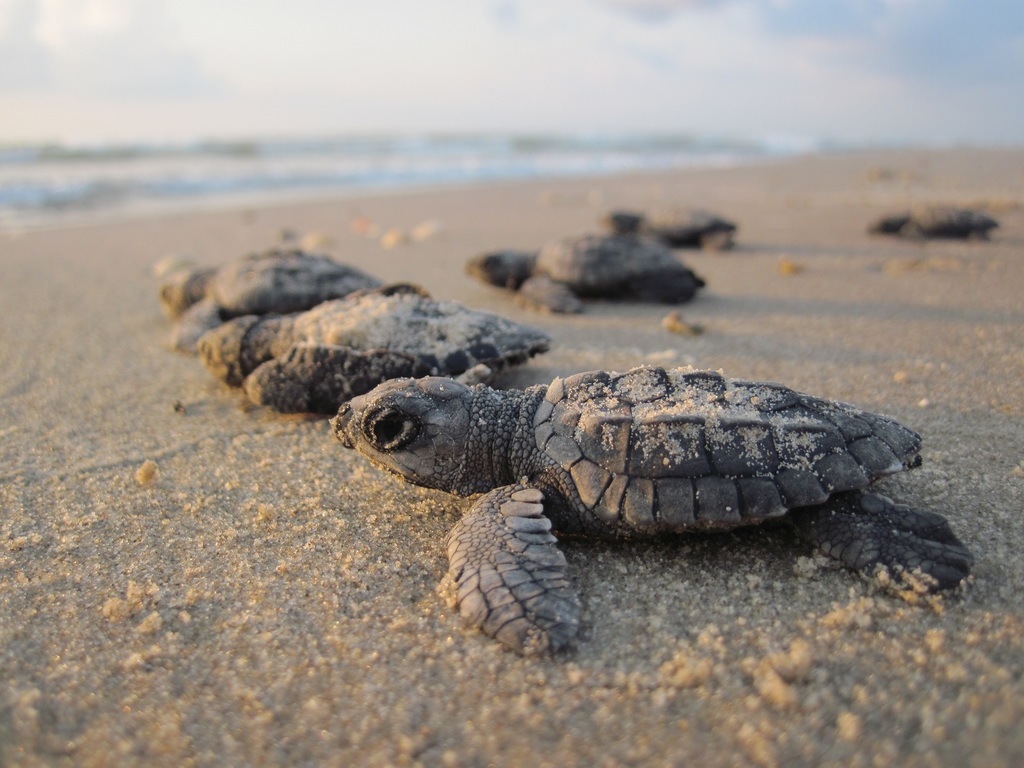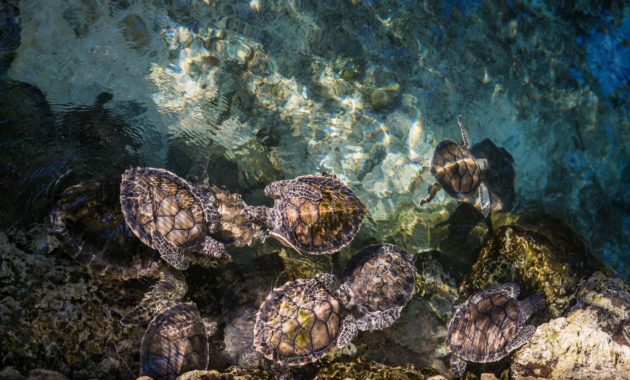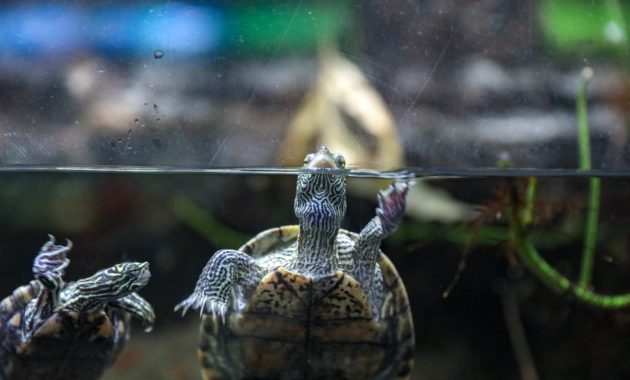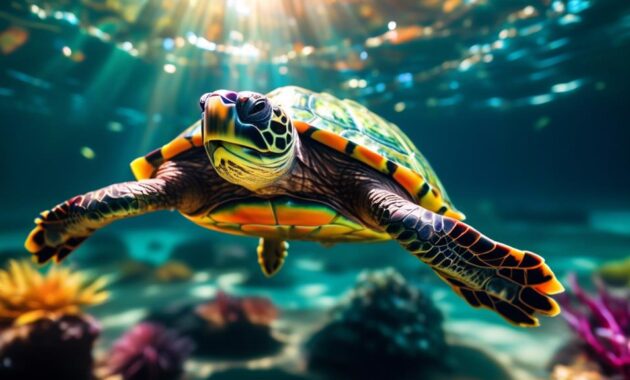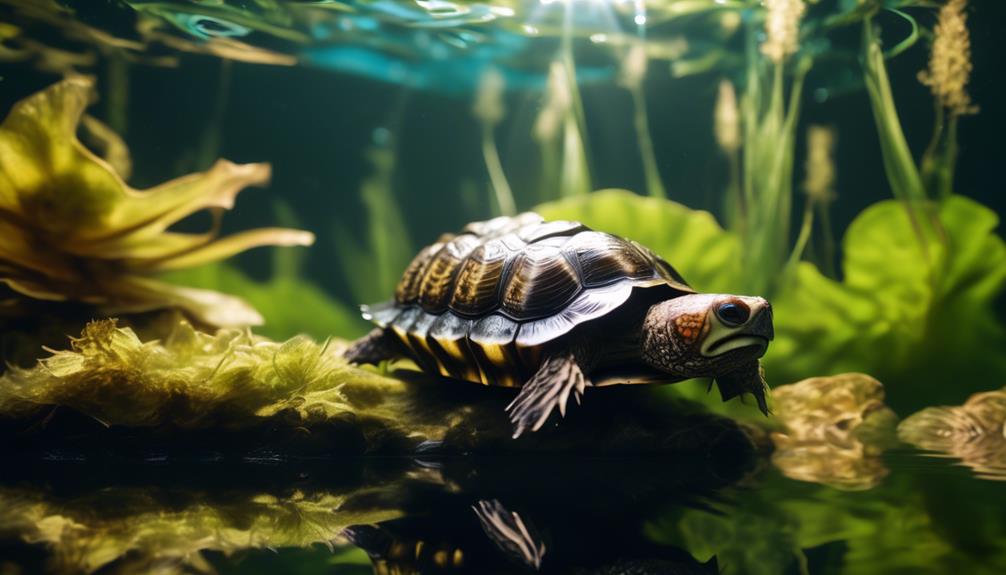
Are you aware that the Razorback Musk Turtle, with its intriguing features and semi-aquatic lifestyle, can live up to 20 years?
This small yet captivating creature has a lot more to offer than just its impressive lifespan. From its unique dietary preferences to its adaptations for aquatic life, the Razorback Musk Turtle is an enigma waiting to be unraveled.
So, if you're curious to learn more about this mysterious species and discover the challenges it faces in its natural habitat, join us as we embark on a journey to unveil the secrets of the Razorback Musk Turtle.
Key Takeaways
- The Razorback Musk Turtle is a small, semi-aquatic turtle with a lifespan of around 20 years.
- It has specific food preferences, including a commercial pelleted diet, insects, plants, worms, and fish.
- Comparable breeds to the Razorback Musk Turtle include the Common Musk Turtle and Loggerhead Musk Turtle.
- The Razorback Musk Turtle is found in various states in the United States, primarily in swamps, rivers, streams, and ponds with vegetation.
Size and Lifespan
The Razorback Musk Turtle is a small semi-aquatic reptile with a variable length and a lifespan of approximately 20 years. It can grow up to 4-6 inches in size, making it a compact and manageable pet.
This turtle is known for its ability to adapt to both aquatic and terrestrial environments, making it a versatile species.
As for its lifespan, with proper care and a suitable habitat, you can expect your Razorback Musk Turtle to live for about two decades. This allows for a long-term commitment and the opportunity to form a lasting bond with your pet.
Remember to provide the necessary care and attention to ensure your turtle's well-being throughout its life.
Comparable Breeds
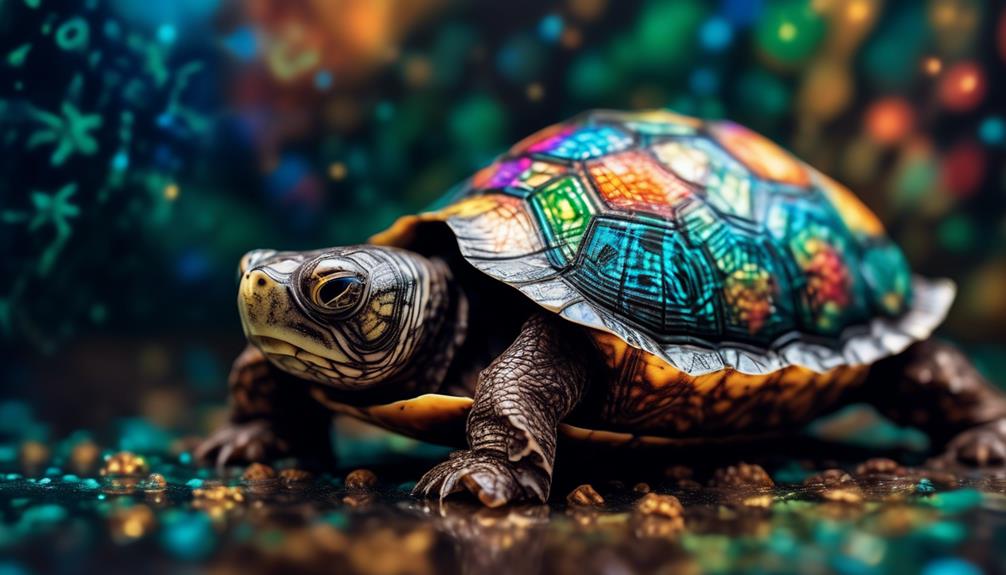
Now let's explore other breeds that are comparable to the Razorback Musk Turtle.
The Common Musk Turtle and the Loggerhead Musk Turtle are two breeds that share similarities with the Razorback Musk Turtle. These breeds are commonly found in the pet trade and have similar care requirements. They also have a small size and a semi-aquatic nature.
However, there are some differences between these breeds, such as variations in shell patterns and markings. It's important to research and understand the specific needs of each breed before considering them as pets.
Native Habitat
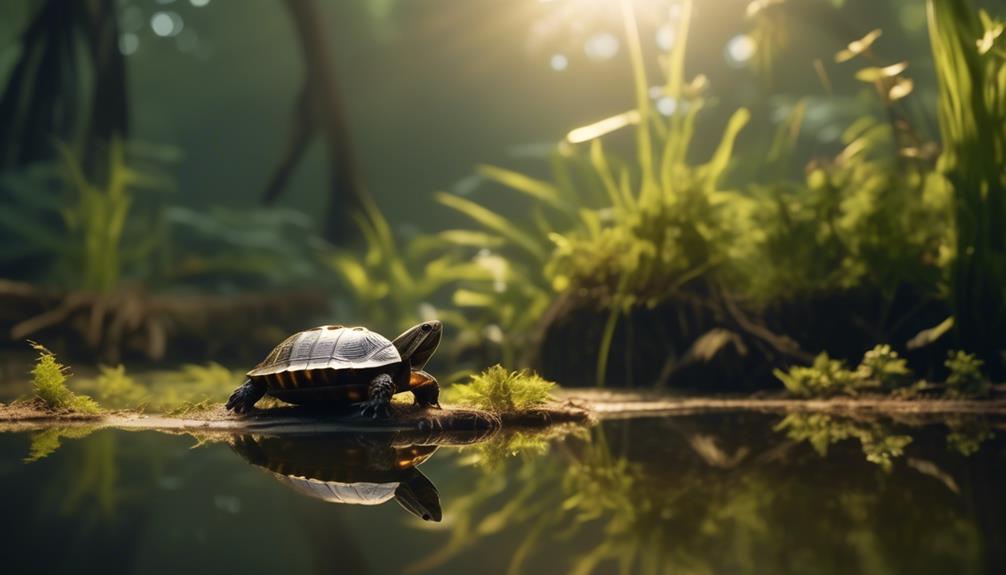
Found in various states in the United States, the Razorback Musk Turtle thrives in swamps, slow-moving rivers, streams, and shallow ponds with vegetation. This turtle's native habitat provides it with the perfect environment to survive and thrive.
Here are three key aspects of the Razorback Musk Turtle's native habitat:
- Abundance of vegetation: The presence of vegetation in swamps, rivers, streams, and ponds provides the Razorback Musk Turtle with ample hiding places, food sources, and a sense of security.
- Slow-moving water: The Razorback Musk Turtle prefers habitats with slow-moving water as it allows them to easily navigate and hunt for food. These calm waters are also ideal for the turtle's basking behavior.
- Adaptations for aquatic life: The Razorback Musk Turtle has physical adaptations that help it survive in its native habitat. Its sharp beak allows it to catch prey, and its strong legs enable it to move efficiently in water.
Understanding the Razorback Musk Turtle's native habitat is crucial for providing proper care and ensuring its well-being in captivity.
Overall Description
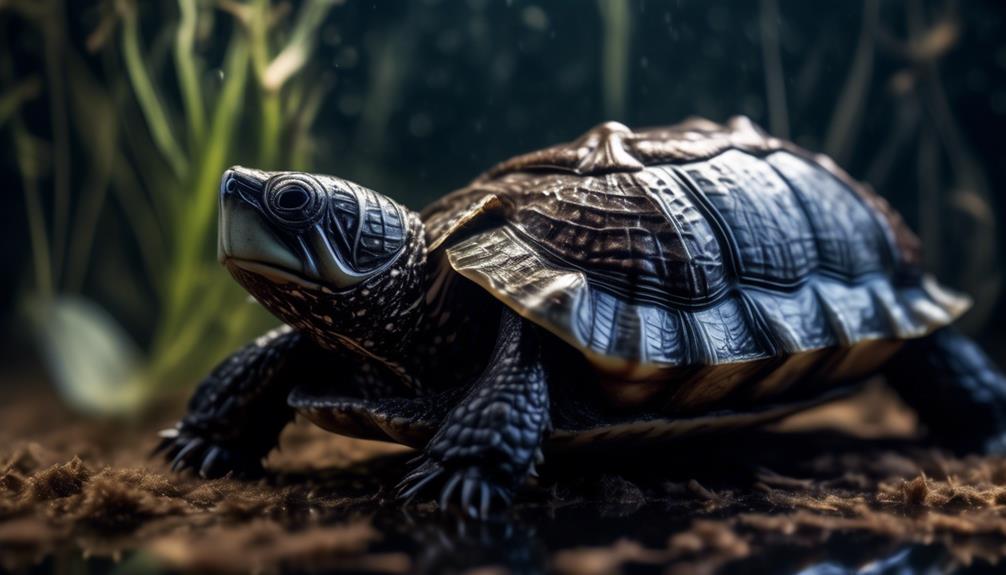
With its distinctive features and unique keel running down the center of its shell, the Razorback Musk Turtle stands out among its counterparts in the turtle world. This small-sized turtle has a large head, long neck, and short legs. Its shell, which gives it its name, has a prominent keel that runs down the center, setting it apart from other turtles.
As the Razorback Musk Turtle ages, its physical appearance and color change. This semi-aquatic turtle prefers a diet consisting of commercial pelleted food, insects, aquatic plants, worms, and fish. With a lifespan of around 20 years, this species can be found in various states in the United States, including Arkansas, Oklahoma, Texas, Mississippi, Florida, and Louisiana.
Care Requirements
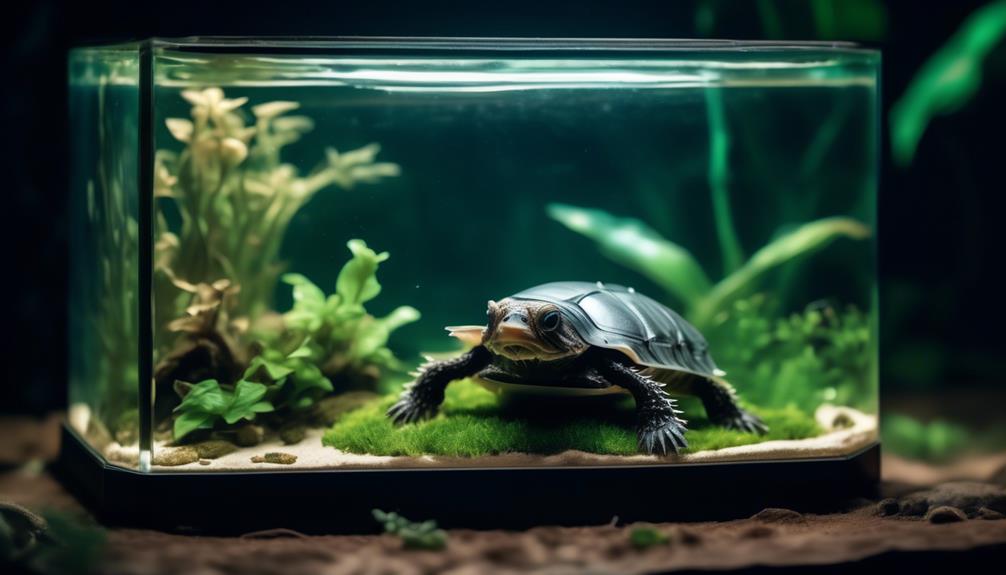
To properly care for the Razorback Musk Turtle, you need to ensure that its enclosure and water requirements are met. Here are three key care requirements to keep in mind:
- Tank size: Providing a spacious environment is crucial for the Razorback Musk Turtle. A minimum 30-gallon aquarium is recommended to accommodate its semi-aquatic nature and allow for swimming and exploration.
- Basking area setup: Creating a basking area with UV light and a heat lamp is essential for the turtle's overall health and well-being. This area allows the turtle to regulate its body temperature and receive essential UV radiation for proper shell development.
- Substrate and water filtration: Choosing an appropriate substrate, such as gravel or sand, is important for the turtle's comfort and hygiene. Additionally, investing in a reliable water filtration system helps maintain clean and healthy water conditions, ensuring the turtle's overall health.
Diet and Feeding Habits
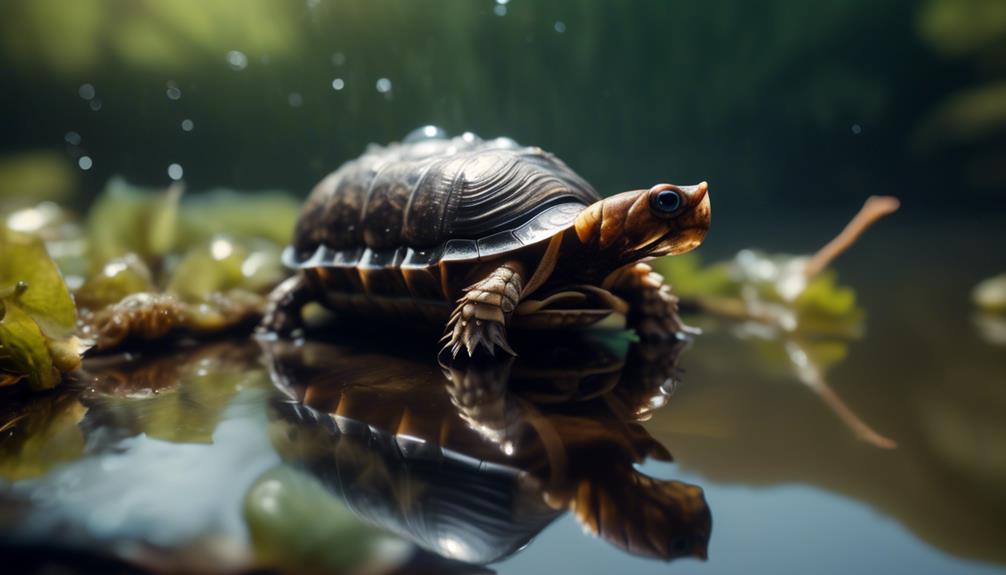
When caring for a Razorback Musk Turtle, it's important to understand its diet and feeding habits. These turtles have specific food preferences that you should take into consideration. A commercial pelleted diet can be a good base for their nutrition, but you should also offer them a variety of other foods. Insects, non-toxic aquatic plants, worms, and fish can all be included in their diet.
It's important to provide a balanced and nutritious diet for your Razorback Musk Turtle to ensure its health and wellbeing. Additionally, it's recommended to offer food in small portions several times a week, rather than large meals all at once. Observing their feeding habits can give you valuable insights into their behavior and overall health.
Reproduction and Breeding
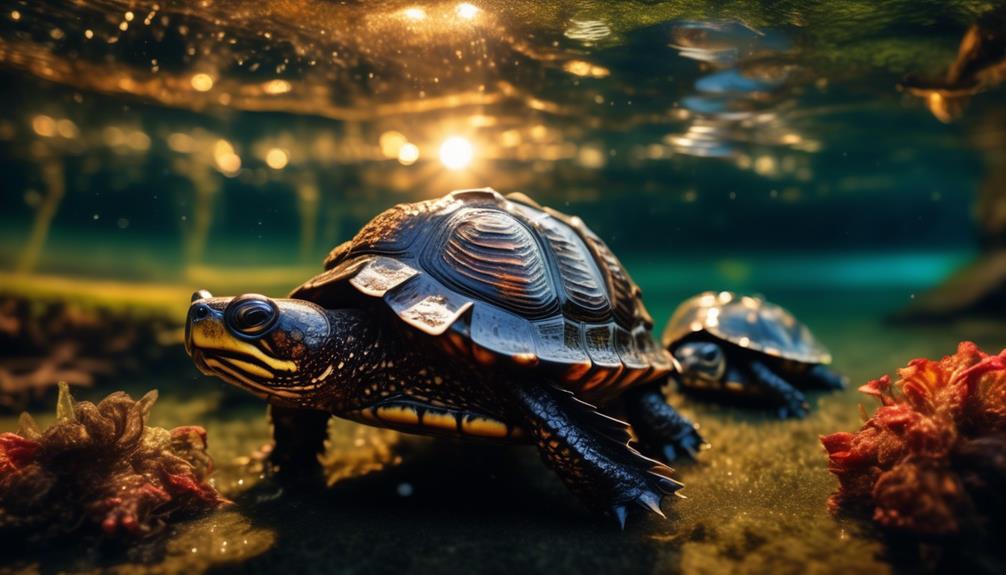
The Razorback Musk Turtle reproduces through a process known as courtship and mating. Here are three key points to understand about the reproduction and breeding of this intriguing species:
- Courtship Behavior: During courtship, male Razorback Musk Turtles will swim around the female and attempt to attract her attention. They may use head bobbing, chin scratching, and even biting to signal their interest. The female will respond by either accepting or rejecting the male's advances.
- Nesting and Egg-laying: After successful mating, the female Razorback Musk Turtle will find a suitable location to lay her eggs. She prefers sandy or loamy soil near water bodies. Once the nest is prepared, she'll lay a clutch of 2 to 6 eggs and cover them up. The eggs will then incubate for approximately 70 to 90 days before hatching.
- Hatchling Care: Once the eggs hatch, the tiny Razorback Musk Turtle hatchlings will emerge and make their way to the water. They're fully independent from birth and will start their own journey in the aquatic world. It's essential to provide a safe and suitable environment for the hatchlings to thrive.
Understanding the reproductive behavior and breeding patterns of the Razorback Musk Turtle can help ensure their successful propagation in captivity and contribute to their conservation in the wild.
Common Health Issues
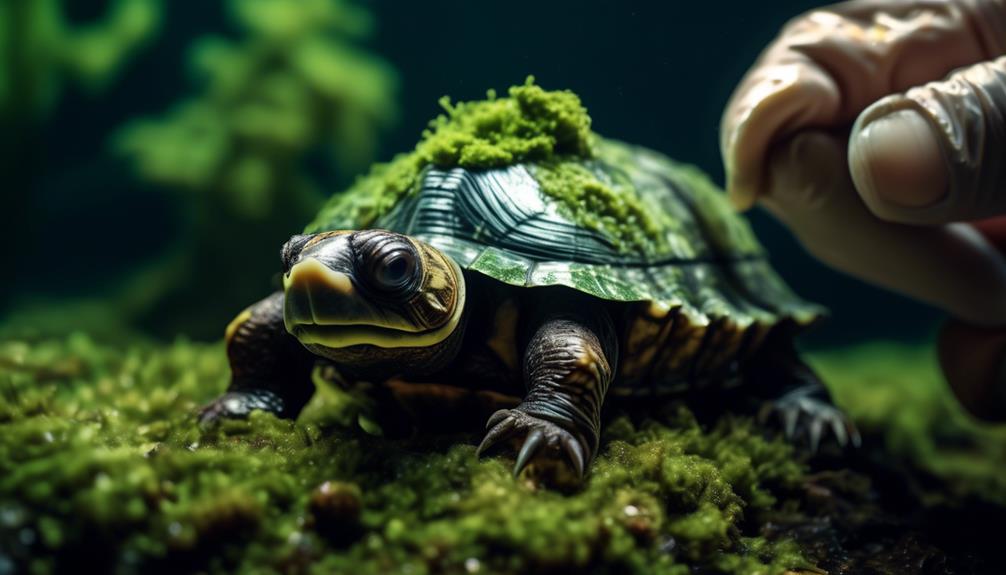
After understanding the reproductive behavior and breeding patterns of the Razorback Musk Turtle, it's important to be aware of common health issues that may affect this species.
Keeping a close eye on your turtle's health is crucial in ensuring its well-being. One common issue is respiratory infections, which can be caused by poor water quality or inadequate basking area. Symptoms include wheezing, gasping for air, and nasal discharge.
Another health concern is shell rot, which is caused by bacterial or fungal infections. It can lead to shell discoloration, softening, and even holes in the shell.
Parasitic infestations, such as ticks and mites, are also common in turtles.
Regular check-ups with a reptile veterinarian and maintaining a clean and suitable habitat are essential in preventing and addressing these health issues.
Conservation and Threats
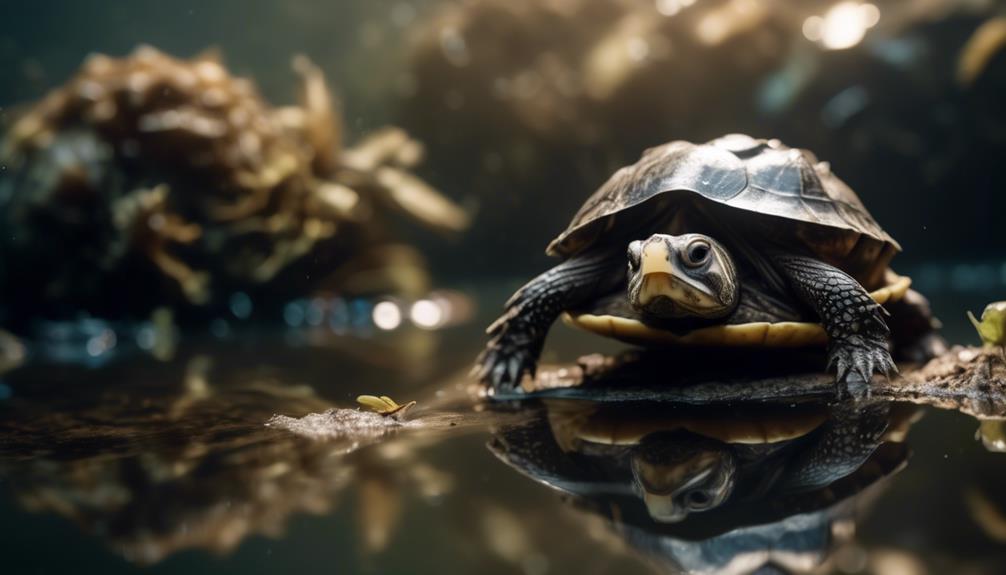
To ensure the survival of the Razorback Musk Turtle, conservation efforts must be implemented to mitigate the threats it faces in its natural habitat.
The following are three key threats to the species:
- Habitat Loss: The destruction and degradation of wetlands, swamps, and ponds due to urbanization, agriculture, and pollution pose a significant threat to the Razorback Musk Turtle. These actions reduce the availability of suitable habitats, limiting their ability to find food, reproduce, and survive.
- Pollution: Water pollution, particularly from agricultural runoff and industrial waste, negatively impacts the Razorback Musk Turtle. Chemicals and pollutants can contaminate their aquatic environments, leading to health issues, reduced food availability, and reproductive problems.
- Illegal Collection: The Razorback Musk Turtle is often targeted by wildlife traffickers for the pet trade. This illegal collection disrupts the population dynamics and genetic diversity of the species, further endangering their survival.
Addressing these threats through habitat conservation, pollution control measures, and enforcement of laws against illegal collection is crucial for the long-term survival of the Razorback Musk Turtle.
Frequently Asked Questions
What Is the Average Weight of a Razorback Musk Turtle?
The average weight of a razorback musk turtle can vary, but it is generally around 1 to 2 pounds. These turtles are small in size and have a semi-aquatic nature.
Can Razorback Musk Turtles Coexist With Other Turtle Species in the Same Enclosure?
Yes, Razorback Musk Turtles can coexist with other turtle species in the same enclosure, but it's important to consider their compatibility, space requirements, and provide enough hiding places to ensure their well-being.
How Often Should the Water in the Tank Be Changed for a Razorback Musk Turtle?
You should change the water in the tank for your Razorback Musk Turtle regularly. Aim for a partial water change every week, removing about 25% of the water and replacing it with clean, dechlorinated water.
Do Razorback Musk Turtles Require Any Specific Environmental Conditions for Breeding?
Razorback Musk Turtles require specific environmental conditions for breeding. They need a suitable nesting area, with a sandy substrate, and a temperature gradient in the enclosure. Providing a separate breeding tank may be beneficial.
Are There Any Known Genetic Health Issues Associated With Razorback Musk Turtles?
There aren't any known genetic health issues associated with Razorback Musk Turtles. However, it's still important to provide them with proper care and a suitable environment to ensure their overall well-being.
Are Razorback Musk Turtles also aggressive like the Snapping Turtles?
Yes, terrifying snapping turtle surprises can be aggressive, but Razorback Musk Turtles are generally more docile. While they may show aggression if provoked, they are not typically as fierce as snapping turtles. It’s important to handle all turtles with care and respect their personal space.
Conclusion
In conclusion, the Razorback Musk Turtle is a captivating and enigmatic species with unique features and dietary preferences. It shares similarities with other Musk Turtle breeds while also having distinct characteristics.
Its native habitats span across various states, and it has adapted well to aquatic life. Proper care and attention to its diet, health, and conservation challenges are crucial for the well-being and preservation of this fascinating creature.
Explore the world of the Razorback Musk Turtle and discover the wonders it holds.

